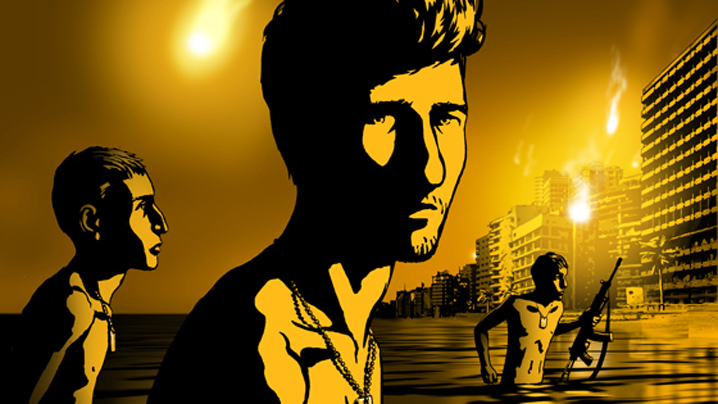
I wouldn’t call this a masterpiece, but it’s certainly honorable and original. I suspect that a major reason why Ari Folman’s animated nightmare has been picking up some sizable awards–best picture by the National Society of Film Critics, best foreign-language film at the Golden Globes–is that it does something that the mainstream U.S. news media more or less refuses to do. It allows the American public to express its disgust and horror for what’s currently happening in Gaza. In a similar way, albeit far more indirectly, roughly two year ago, Clint Eastwood’s Letters from Iwo Jima allowed many of us to cope a little better with some of our rage and sorrow about the occupation of Iraq. And as I noted at the time in my capsule review for that film, Waltz with Bashir also suggests that distinguishing between meaningful and senseless wars may be a civilian luxury. [1/12/09] Read more
From the Chicago Reader (June 23, 2006). — J.R.
Three Times
**** (Masterpiece)
Directed by Hou Hsiao-hsien
Written by Chu T’ien-wen and Hou
With Chang Chen, Shu Qi, Di Mei, Liao Su-jen, and Mei Fang
For decades Chinese history has been suppressed in China, on the mainland and in Taiwan, whether the subject is occupation or revolution, communism or capitalism. Recovering that history has become an obsession for art film directors such as Hou Hsiao-hsien, Jia Zhang-ke, Stanley Kwan, Edward Yang, Tian Zhuangzhuang, Tsai Ming-liang, and Wong Kar-wai, whose films are set in both the past and the present.
Hou Hsiao-hsien’s Three Times (2005) is split into three episodes set in Taiwan, each running about 40 minutes and featuring Chang Chen and Shu Qi; all three reflect Hou’s overriding concern with the way one’s sense of freedom, desire, and life possibilities is inflected by the age one lives in. The episodes are also about romantic disconnection and failed communication, with the romantic tensions reflecting international ones.
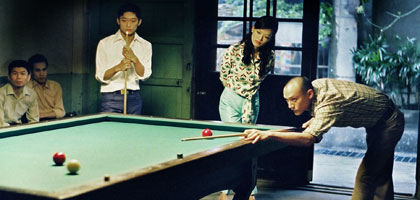
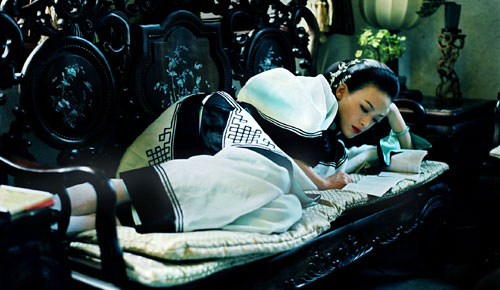

In “A Time for Love,” set in 1966 in Kaohsiung, Chen (Chang) receives his draft notice, then writes a love letter to May (Shu), who works at the snooker parlor where he hangs out. He discovers that she’s taken a job at another snooker parlor, and to the strains of “Smoke Gets in Your Eyes” and “Rain and Tears” he heads off to find her before reporting for duty. Read more
Early in 2009, I received a phone call from Béla Tarr, asking me if I could write a page about Sátántangó (1994) for a Hungarian newspaper to celebrate its 15th anniversary. Here’s what I sent him. —J.R.
Sátántangó at 15
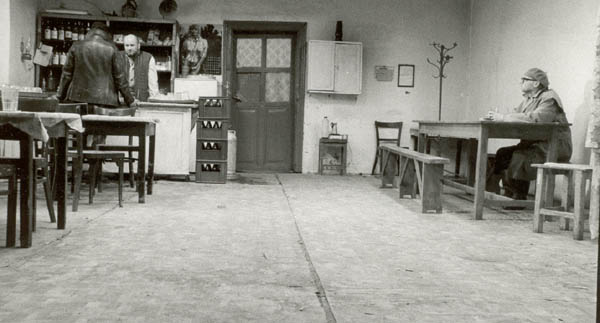
Congratulations to Sátántangó on its 15th anniversary. Now that it’s a teenager, I’m happy that English-speaking fans can finally, at long last, look forward to an English translation of László Krasznahorkai’s novel. As a member of PEN, I was invited last year to suggest literary works for English translation. After I proposed Sátántangó and they published my response, I received a note from Barbara Epler of New Directions: “We are waiting on the delivery of its translation by the great George Szirtes, eagerly waiting, and will publish it as soon as we can. (We already have his translations of László’s The Melancholy of Resistance and War & War.)” So once it appears, I’ll no longer have to depend on the French translation by Joëlle Dufeuilly (2000) published by Gallimard, which I’ve owned for many years.
The film finally became available here last year on DVD from Facets Video, helping to demonstrate how much cinema as a “language” is more easily translatable than literature. Read more
DREAMS FROM MY FATHER: A STORY OF RACE AND INHERITANCE by Barack Obama (New York: Three Rivers Press) 1995, 480 pp.
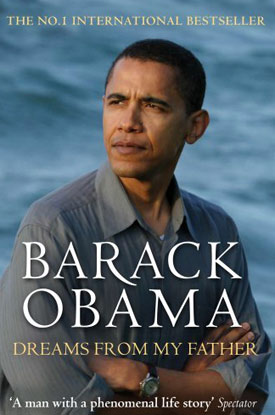

This book, which I’m still reading (I’m in its final section, about Kenya), is considerably more powerful, both as writing and as autobiography, than Obama’s follow-up book, The Audacity of Hope: Thoughts on Reclaiming the American Dream. For me the most striking episode so far occurs in New York, and, significantly enough, it occurs at the movies. (Most of the gist of this episode can be found on pp. 123-125, towards the end of the first of the book’s three main sections, “Origins”.)
During a visit from Obama’s (white) mother, she finds an ad for a downtown revival of Black Orpheus in the Village Voice, which she describes as the first foreign film she ever saw, when she was 16 and in Chicago and “thought it was the most beautiful thing I’d ever seen.” She and Obama and his sister Maya go to the revival house in a cab (the cab is a typically telling novelistic detail), and halfway through the picture Obama finds himself seething at what he finds racist and paternalistic in this white, French depiction of black and brown Brazilians in the Rio favelas during Carnival — which he describes as “the reverse image of Conrad’s dark savages” [in Heart of Darkness]. Read more







